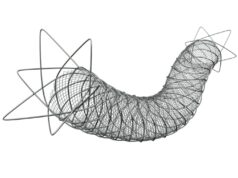
A retrospective study has indicated that carotid artery stenting (CAS)—when performed by fellowship‐trained neurointerventional physicians in comprehensive stroke centre (CSC) settings—was associated with a lower complication rate as compared to prior literature on CAS, carotid endarterectomy (CEA) and transcarotid artery revascularisation (TCAR).
Detailing their findings in the journal Stroke: Vascular and Interventional Neurology, Mohamad Ezzeldin (HCA Houston Healthcare, Kingwood, USA) and colleagues suggest that physician training, higher procedure frequency, and standardised stroke care in a CSC setting, may be among factors contributing to this low complication rate.
According to the authors, multiple previous studies have highlighted the importance of operator experience when it comes to CAS treatments—but fellowship-trained neurointerventionists remain “an underrepresented specialty” in the current literature. As such, Ezzeldin et al set out to report CAS-related complication rates exclusively when the procedure is performed by neurointerventionists, doing so via a retrospective cohort study of stenting for symptomatic and asymptomatic carotid stenosis cases collected from multiple CSCs. Their primary endpoint was a composite of 30‐day periprocedural mortality, symptomatic ischaemic stroke, symptomatic intracranial haemorrhage (ICH), and myocardial infarction (MI).
Between 2018 and 2022, a total of 1,445 CAS procedures were performed by 38 neurointerventionists across 17 participating centres. From these cases, the investigators obtained 30-day outcome data on 1,281 patients who were predominantly symptomatic (93.01%), male (65.79%) and white (70.36%), and had a median age of 69 years.
Ezzeldin and colleagues relay that, overall, the composite primary endpoint occurred in 26 cases (1.8%). This included 13 deaths (0.9%), eight symptomatic ischaemic strokes (0.55%), four symptomatic ICHs (0.28%) and one MI (0.07%). The researchers also found that there was a statistically significant increase in their primary outcome measure that correlated with the following factors: advanced age (p=0.001), female sex (p=0.013), aortic arch type 3 (p=0.01), and higher preprocedural modified Rankin scale (mRS) score (p=0.006).
A range of secondary endpoints—including but not limited to non-periprocedural mortality, asymptomatic ICH, transient ischaemic attack (TIA), access-site complications and in-stent thrombosis—occurred at a rate of 2.84%. Being observed in eight patients (0.55%), access-site complications proved to be the most common of these secondary measures. The investigators found a further trend whereby the rate of these secondary endpoints was higher in Hispanic and Black patients as compared to their white counterparts (p=0.007), and in those with low diastolic blood pressure prior to stenting (p=0.04).
Discussing their findings, Ezzeldin et al state that the 30-day perioperative stroke, death or MI rate reported in this study (1.7%) is “notably lower” than those observed in previously published studies involving CAS; for example, EVA-3S (9.6%), SPACE (6.84%), CREST (6.7%), CHOICE (4.1%) and ACST-2 (3.7%). This figure therefore adheres to the maximum rates of 30-day stroke or death—3% for asymptomatic and 6% for symptomatic carotid disease—that have been established as a threshold for carotid revascularisation and are a requirement for CSC certification by the Joint Commission, according to the researchers. They go on to note that existing data on CEA suggest a perioperative stroke or death rate of 0.7–6.34%, and TCAR registries have reported a rate of roughly 5% in symptomatic patients as well as a 3% rate of perioperative stroke, death or MI.
Ezzeldin and colleagues conclude by adding that they hope many of the potential limitations of the present study—including its lack of a non-neurointerventional control group, differences between its patient population and those seen in other CAS studies, and limited data from which to draw conclusions on stenting in asymptomatic carotid stenosis patients—will be addressed by the ongoing CASSH registry.













